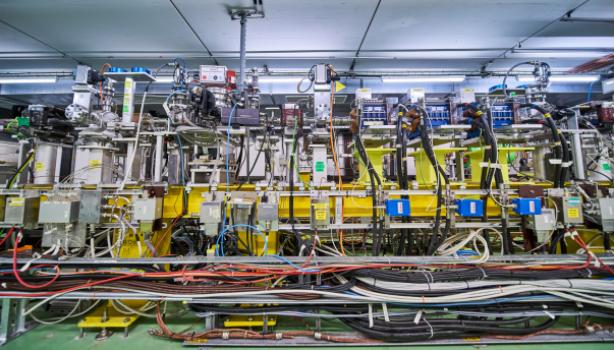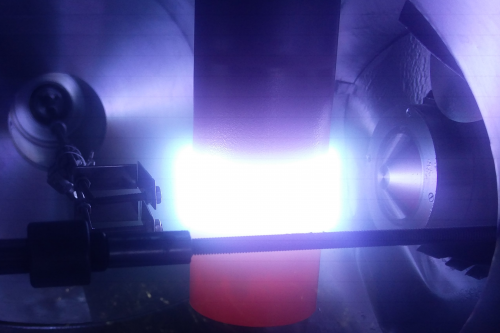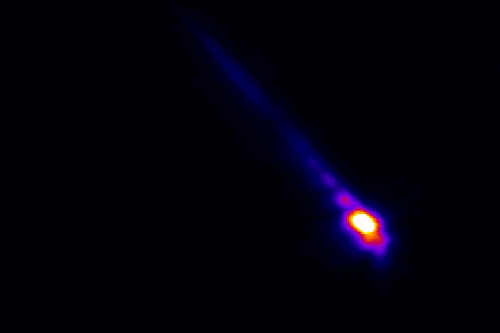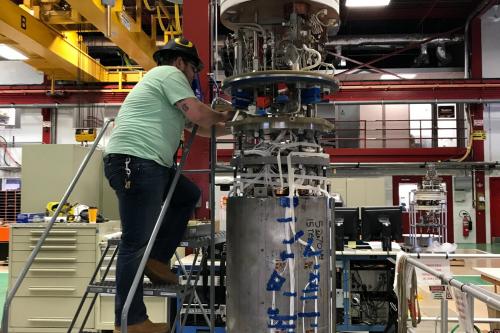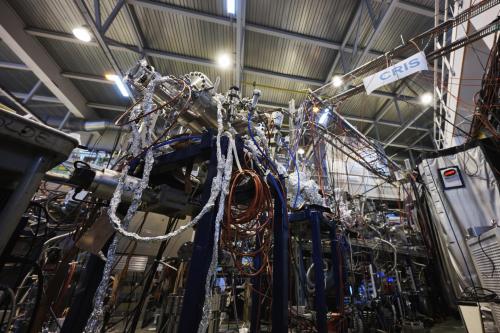issue 33
July 2020
Welcome to issue #33 of Accelerating News!
The world has not quite gone back to what it used to be, and the consequences of the global situation can still be harshly felt in some communities, but the odd opportunity is cropping up in the world of physics and particle accelerators. One such opportunity is the increased reach of certain events and conferences, which are taking place online due to the circumstances.
An example is the international School on Precision Studies for the AVA (Accelerators Validating Antimatter physics) network, on which we report in this summer issue.
Issue #33 also brings two articles on the physics world: the first laser spectroscopy of short-lived radioactive molecules, produced at CERN’s Proton Synchrotron Booster; and a summary of the European Particle Physics Strategy Update, announced last June. The rest of the issue focuses, as usual, on the LHC High-Luminosity upgrades during Long Shutdown 2, namely the TDIS unit and the novel cryostat units; and on studies for future collider machines. Other achievements include a 14.5T field-strength for an accelerator steering dipole magnet achieved at Fermilab; and a series of remote access beam measurements conducted by the University of Liverpool and the synchrotron facility Diamond Light Source.
An essay by the International Irradiation Association reflects on the importance of knowledge transfer for the development and application of ionizing radiation and brings this issue to a close.
Finally, an announcement: with this issue, we say goodbye to the current website. Accelerating News will return in the fall in a new, improved home. All past issues will be archived and readily available. For now, we wish all our readers a fantastic summer, we will see you in October. Happy reading!
Daniela Antonio, for the Accelerating News Editorial Team
The efficiency frontiers for high RF power L-band Multi-Beam Klystrons
Exploring novel technologies for major savings in the energy consumption and cost of future accelerators.
Particle physicists update strategy for the future of the field in Europe
The CERN Council announced that it has updated the strategy that will guide the future of particle physics in Europe.
Installation of the TDIS unit for the High-Luminosity LHC
Nearly one year after the start of the assembly activities the first 3-module-device Target Dump Injection Segmented (TDIS) unit is ready to be installed.
HL-LHC equipment installed on both sides of the ALICE experiment
Novel cryostat units have been installed for the High-Luminosity LHC to allow insertion of room-temperature collimators in the LHC’s 1.9 K cryostats.
A new sputtering technique for the coating of SRF cavities with 3D complex geometries
In a recent paper, the densification of coated Nb films on copper samples at 90deg angle of incidence was explored for different techniques.
Synchrotron radiation imaging at 200 miles
Experts from the University of Liverpool and Diamond Light Source have taken a step further and conducted a series of remote access beam measurements.
Fermilab achieves 14.5-tesla field for accelerator magnet, setting new world record
Fermilab achieved a 14.5-tesla field strength for an accelerator steering dipole magnet, surpassing their previous record of 14.1 T.
ISOLDE scores a first with laser spectroscopy of short-lived radioactive molecules
The result represents an essential step towards using these molecules for fundamental physics research and beyond.
The importance of knowledge transfer in the development and application of ionizing radiation
Companies provided the means by which ionizing radiation could be utilised in the development of products and services.
International School on Precision Studies for the AVA Network
The latest training, a week-long School on Precision Studies, was organised to take place in Prague (Czech Republic) at the end of March 2020.
